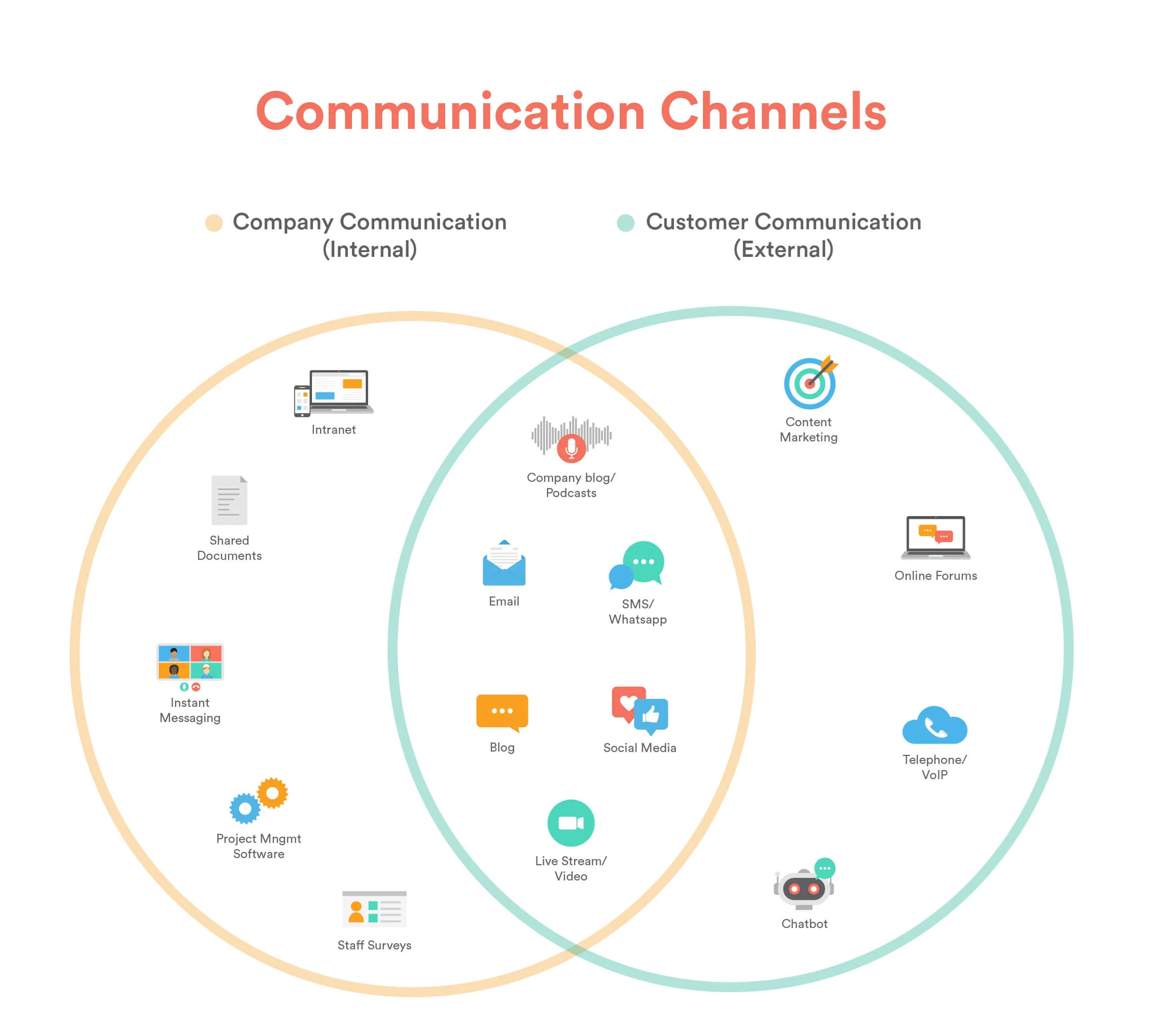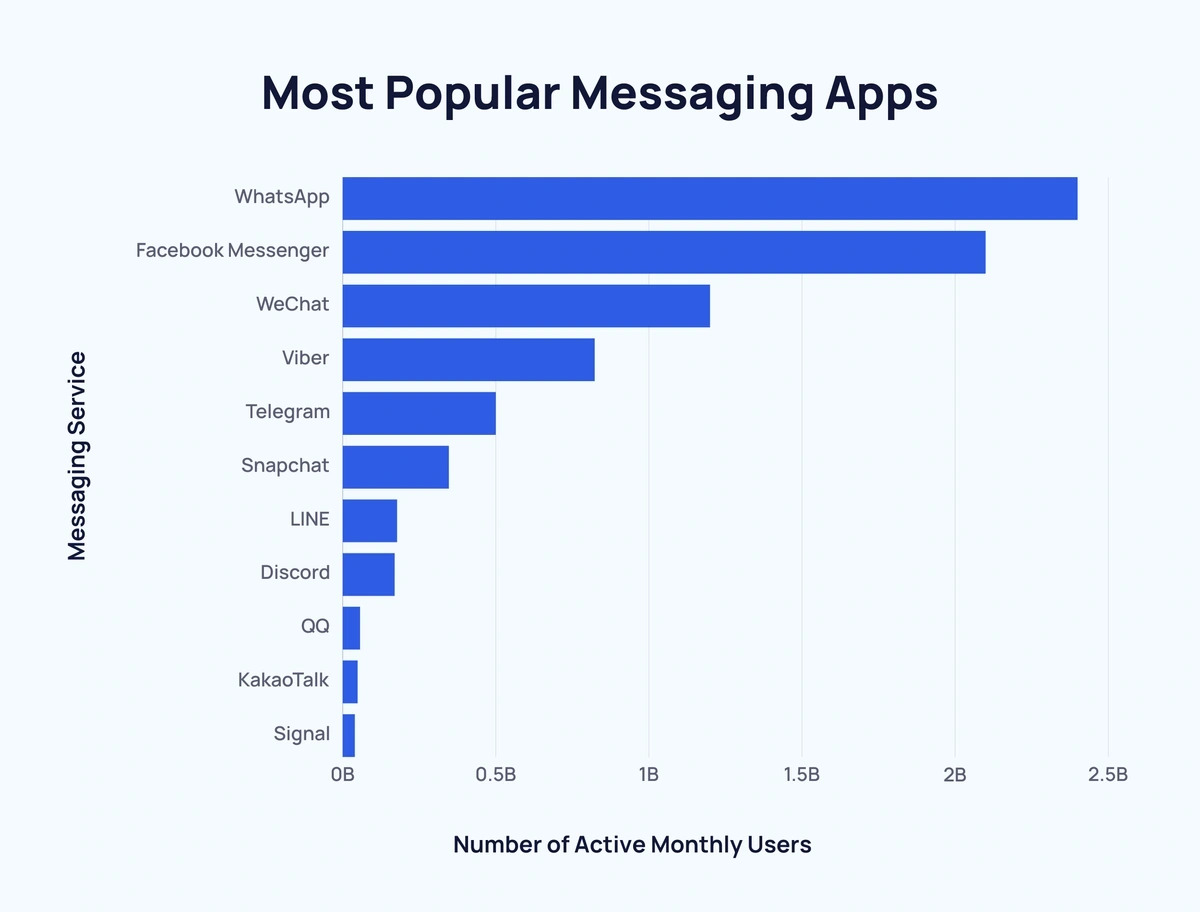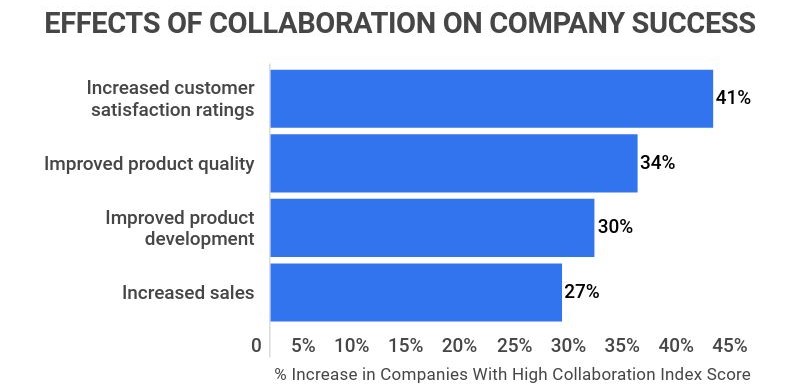Businesses are currently relying heavily on efficient channels to convey information, ideas, and strategies.
The selection of communication channels, whether for internal team collaboration or external client and stakeholder interactions, significantly impacts productivity, collaboration, and overall performance. Despite its importance, 69% of managers find managing remote employee communication challenging.
By embracing innovative technologies and strategic approaches, businesses can optimize their communication channels to build relationships and drive organizational growth. In this blog, we’ll look into the most effective communication channels for businesses to maximize efficiency and effectiveness.
Not knowing how to scale your small business can lead to stagnation, missed opportunities, diminished ROI, and loss of competitive edge. To avoid this, enhance profitability, capture growth opportunities, and expand market share, strategically scale your business with our proven strategies.
Continuous scaling ensures you’re agile and adaptable to support dynamic market demands.
What is a Communication Channel for Business?
Communication channels for business refer to the various mediums and methods through which information, ideas, and messages are exchanged within an organization and with external parties. These channels encompass a spectrum of tools and platforms, including emails, meetings, phone calls, instant messaging, video conferences, and social media platforms.

The selection of appropriate communication channels depends on factors such as audience, message complexity, urgency, and preferences. Effective channel utilization facilitates seamless interaction, collaboration, and information dissemination, enhancing organizational efficiency and productivity.
10 Effective Communication Channels in Business
Choosing the right one among different communication channels is essential for effective interaction and collaboration. Here, we explore ten diverse and impactful communication channels that businesses can leverage to optimize their internal and external communication strategies.
1. Email communication
Email is a fundamental external and internal communication channel for business. It facilitates the seamless exchange of formal messages, documents, and information among colleagues, clients, and stakeholders. With features such as attachments and threaded conversations, email ensures clear documentation and easy tracking of correspondence.
Its synchronized nature provides flexibility in response times, catering to both immediate needs and long-term communication requirements. Email’s ubiquity and accessibility across devices make it a cornerstone of professional communication strategies in modern workplaces, fostering efficient internal collaboration and information dissemination.
2. In-person meetings
In-person meetings are essential communication channels in the workplace, offering unparalleled advantages for effective business interaction. These face-to-face gatherings provide real-time engagement, enabling nuanced discussions and immediate feedback. Unlike virtual meetings, they foster deeper connections and understanding through nonverbal cues and body language, enhancing collaboration and alignment within organizations.
In-person meetings excel in facilitating sensitive negotiations, brainstorming sessions, and team-building activities, contributing to the cultivation of trust and successful business relationships. Despite technological advancements, their enduring value underscores their irreplaceable role in workplace communication channels.
3. Instant messaging platforms
Instant messaging platforms serve as effective communication channels in the workplace, facilitating real-time exchanges and seamless collaboration among teams and across organizations. With features like instant delivery and read receipts, they enable efficient sharing of information, ideas, and updates. Moreover, multimedia sharing enhances communication richness.

By creating group chats and channels, these platforms promote team cohesion and enable swift decision-making processes. Additionally, these platforms facilitate informal communication, nurturing camaraderie among team members despite geographical constraints. Businesses tend to use WhatsApp as it is the most used messaging app. In fast-paced business environments, instant messaging platforms play a crucial role in enhancing productivity and maintaining fluid communication.
4. Video conferencing
Video conferencing has transformed remote communication by allowing face-to-face interactions without being hindered by geographical distances. It allows participants to engage in meetings, presentations, and collaborations with high-quality audio and video streams.
Video conferencing fosters a sense of presence, enhancing communication by capturing non-verbal cues and expressions. With capabilities such as screen sharing and recording, it enables dynamic presentations and facilitates knowledge sharing among team members.
Video conferencing platforms promote inclusivity, allowing remote employees to participate actively in discussions and decision-making processes. In today’s globalized workforce, video conferencing serves as a vital tool for fostering collaboration, reducing travel costs, and improving productivity.
5. Project management software
Project management software acts as a centralized hub for planning, organizing, and tracking tasks and projects within organizations. It empowers teams to allocate resources efficiently, establish deadlines, and monitor progress in real-time. With features like Gantt charts, task lists, and milestone tracking, project management software enhances transparency and accountability throughout the project lifecycle.
It promotes seamless collaboration by enabling team members to communicate, share files, and update progress within the platform. By streamlining workflows and enhancing visibility, project management software empowers teams to meet deadlines, manage resources effectively, and deliver successful outcomes.
You May Also Like To Read: 12 Best Business Communication Solution of 2024
6. Internal newsletters
Internal newsletters are an effective communication tool used by organizations to disseminate important updates, announcements, and achievements to employees. These platforms act as a centralized hub for distributing company news, events, and initiatives, cultivating a sense of community and engagement among staff members.
Internal newsletters also provide valuable insights into organizational culture, values, and strategic objectives, keeping employees informed and aligned with company goals. Through engaging content and visually appealing layouts, they promote transparency and open communication channels, facilitating feedback and dialogue within the workplace. Internal newsletters play a crucial role in strengthening internal communication and nurturing a positive work environment.
7. Social media platforms
Social media platforms offer businesses powerful and successful external communication channels (if you capture the trend) for engaging with customers, building brand awareness, and driving marketing initiatives. With billions of users worldwide, platforms like Facebook, Twitter, LinkedIn, and Instagram provide extensive reach and targeting capabilities for businesses of all sizes.

Through regular posts, updates, and multimedia content, businesses can showcase their products, services, and company culture to a global audience. Social media platforms also enable direct communication with customers, allowing businesses to address inquiries, gather feedback, and resolve issues in real time. By leveraging social communication media effectively, businesses can enhance brand visibility, cultivate customer relationships, and stay competitive in today’s digital landscape.
8. Intranet portals
Intranet portals serve as private, internal websites accessible only to employees within an organization. They provide centralized hubs for accessing company resources, policies, and information, promoting organizational transparency and knowledge sharing. Intranet portals often feature employee directories, document repositories, and discussion forums, facilitating collaboration and communication among team members.
Additionally, they can integrate workflow tools, calendars, and task management systems to streamline business processes and enhance productivity. Intranet portals empower employees to stay informed, connected, and engaged with company updates and initiatives, fostering a sense of belonging and alignment with organizational goals.
9. Phone calls
Phone calls persist as essential feedback channels for employees within business settings, providing immediate and direct interaction between parties. They offer a personal touch and allow for nuanced conversations that written communication may lack. Particularly useful for addressing urgent matters and clarifying complex issues, phone calls foster trust and rapport among clients, partners, and colleagues.
Despite the prevalence of digital communication channels, the human connection facilitated by phone calls remains invaluable for building and maintaining strong relationships in both professional and personal contexts. Thus, phone calls serve as crucial feedback channels for employees.
Get a Virtual Phone System to Make Calls at Minimal Costs
- Buy Numbers
- Add Users
- Start Calling

10. Workplace collaboration
Workplace collaboration refers to the collective efforts of team members to achieve common goals and tasks within an organization. It encompasses various communication channels, tools, and methodologies aimed at fostering teamwork, creativity, and productivity. Collaboration platforms such as Microsoft Teams, Slack, and Google Workspace provide centralized spaces for teams to communicate, share files, and collaborate on projects in real time.

These platforms facilitate seamless information exchange, task delegation, and feedback loops, enabling teams to work efficiently and iteratively toward shared objectives. By promoting transparency, accountability, and knowledge sharing, workplace collaboration platforms play a pivotal role in driving innovation and success in today’s dynamic business environments.
Conclusion
In conclusion, effective communication channels are vital components of successful business operations. From traditional methods like email and in-person meetings to modern platforms such as video conferencing and social media, each channel serves a unique purpose in facilitating collaboration, fostering transparency, and driving productivity within organizations.
Through the utilization of varied communication tools, businesses can optimize processes, improve team dynamics, and cultivate robust relationships with customers and stakeholders. Embracing innovative technologies and strategic approaches to communication enables businesses to adapt to changing dynamics, stay competitive, and thrive in today’s fast-paced and interconnected business landscape.
FAQs
1) What are the three main business channels of communication?
The three main business channels of communication are verbal (such as face-to-face conversations and phone calls), written communications (including emails, memos, and reports), and non-verbal (body language, facial expressions, and gestures).
2) What is the most effective channel of communication?
Determining the most effective communication channel relies on factors like the message, audience, and context. Nonetheless, face-to-face interaction is frequently regarded as the most effective due to its capacity for immediate feedback, clarification, and assessment of non-verbal communication.
3) What is an effective communication strategy in business?
Clear messaging, active listening, appropriate channels, open dialogue, regular updates, and feedback.
4) What type of communication is most difficult for leaders?
The most difficult type of communication for leaders often involves delivering difficult or sensitive messages, addressing conflicts, and providing constructive feedback. Communicating organizational changes, layoffs, or unpopular decisions requires empathy, transparency, and effective conflict-resolution skills to maintain trust and morale within the team.

Subscribe to our newsletter & never miss our latest news and promotions.









